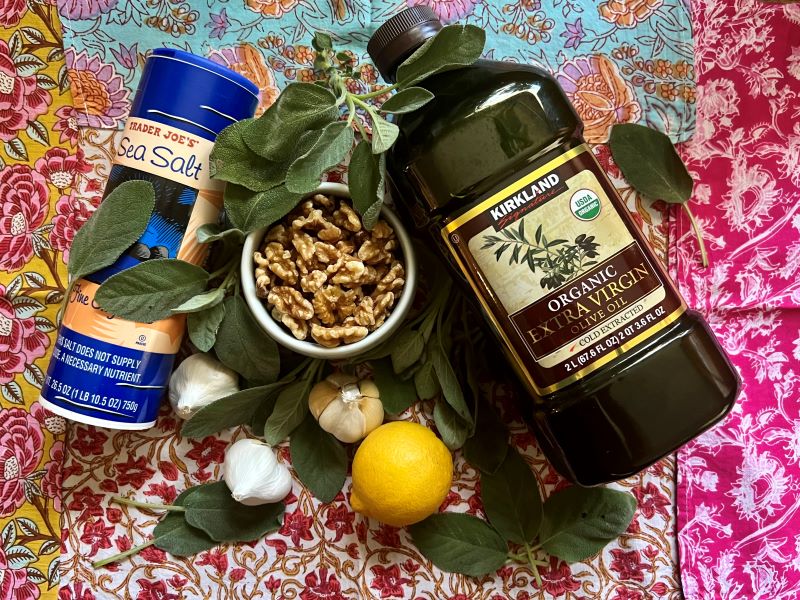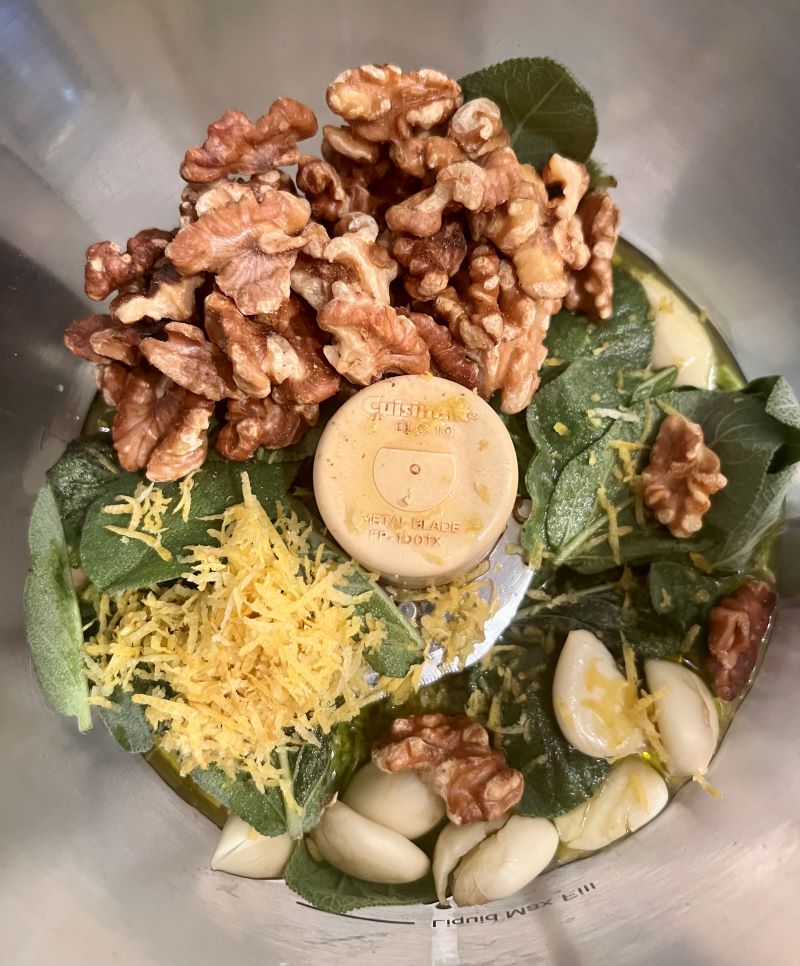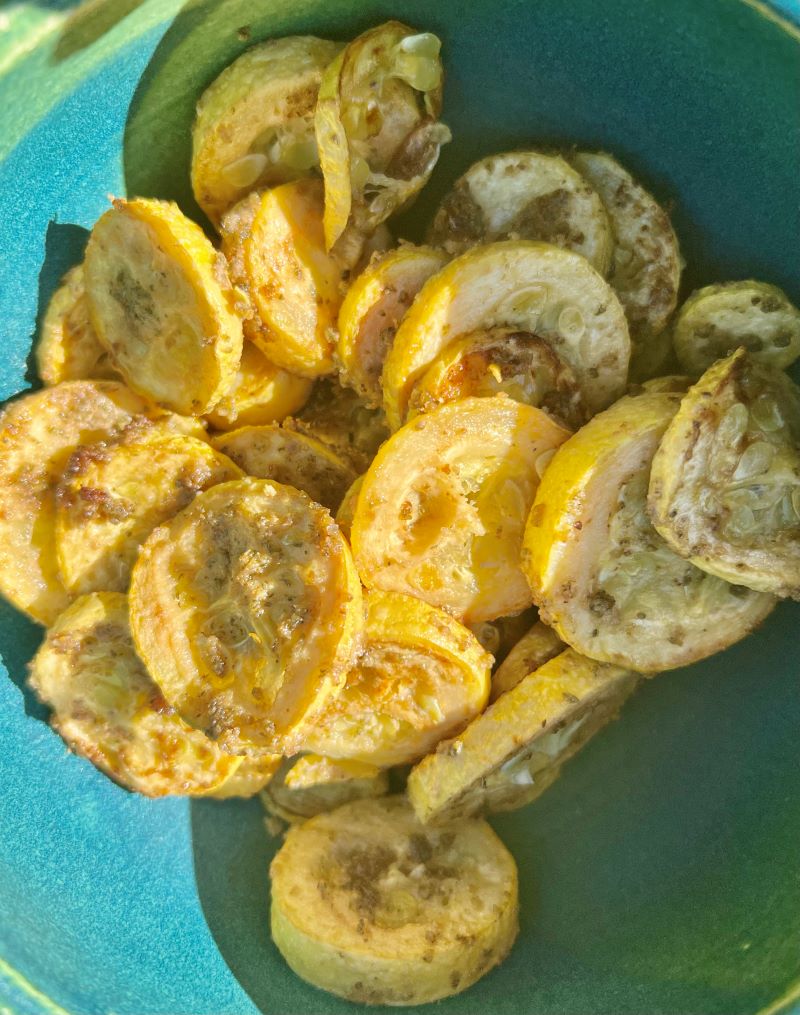
Let’s try something new…something different. This week I noticed an abundant amount of sage growing lushly in my garden. Thick, silvery, slightly fuzzy leaves popping up everywhere. I hate to see anything from the garden go unused, so I spent some time thinking about what I could do with it, besides simply drying the leaves and using them as a cooking herb, like I have done in the past. I decided to try my hand at sage pesto. It felt like it would be a gamble. Perhaps sage was too strong a flavor to use so much of, fresh. Well, that was definitely wrong. Sage pesto is a deep, robust, earthy, delicious concoction that defies what you think the strong, perhaps even resinous tasting leaves of sage would taste like.
I love making not so ordinary pestos that use different herbs other than the normal basil variety…Nothing against basil, I love a good basil pesto too, but there are so many different herbs that can go through a magical transformation when simply combining garlic, olive oil, toasted nuts, and lemon to them. You must try! There are many different types of edible sages. The one I used is called berggarten sage. There are several others that you could use: curly sage, tangerine sage, pineapple sage, or culinary sage, to name a few. Take a moment to look up your sage if you are unsure. It’s better to be safe than sorry. Sage is an assertive herb that should be used in dishes that can handle its power. This pesto can be eaten straight out of the jar slathered on pieces of toasted baguette, used as a marinade for meat dishes, on pizza, pasta, beans, grilled, or roasted veggies, sweet potato, or squash. Try roasted sage pesto broccoli or cauliflower…Yum!
Sage is an evergreen shrub within the mint family, which helps to account for the herbs refreshing aroma, and flavor. Sage is an anti-inflammatory, anti-bacterial, antioxidant. It has been used to aid in digestive issues including stomach pain, flatulence, diarrhea, bloating, and heartburn. Native Americans chewed the leaves to ease stomach discomfort. It has also been used to improve memory, and delay the progression of Alzheimer’s disease…and can help with menopause by reducing hot flashes, joint pain, and sleep issues. Not a bad herb to have in your back pocket (or your garden) just in case.
Wonderful, let’s make this stuff…
Ingredients:
- 1 cup of tender young sage leaves…wash and let dry
- ½ cup of olive oil
- ½ cup of toasted walnuts…toast in a pan on the stove for about 5 minutes, tossing them till evenly toasted, or in the oven at 350 for 5 minutes.
- Zest of one lemon
- 2 tablespoons of lemon juice
- 10-12 cloves of garlic depending on their size and your taste
- Salt to taste

Combine all of the ingredients in a food processor and blend until desired consistency is achieved. So simple, and easy! I hope this pesto alternative opens up the door to you trying other delicious varieties. I hope it gets you creating new and exciting flavors that aren’t as talked about or as traditional as the ever so famous basil pesto kind. The world is your oyster…create, cook, and enjoy. Here is wishing you good luck, and good health on all of your cooking adventures.





